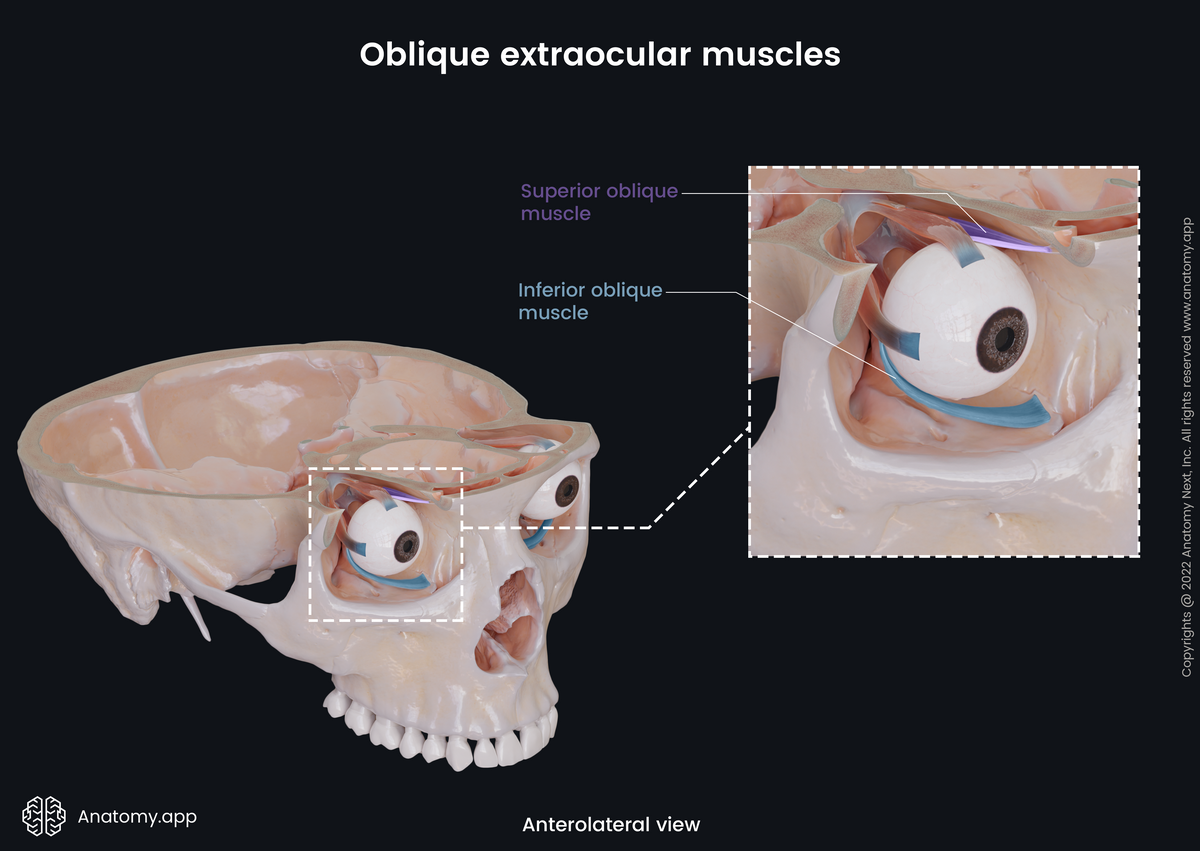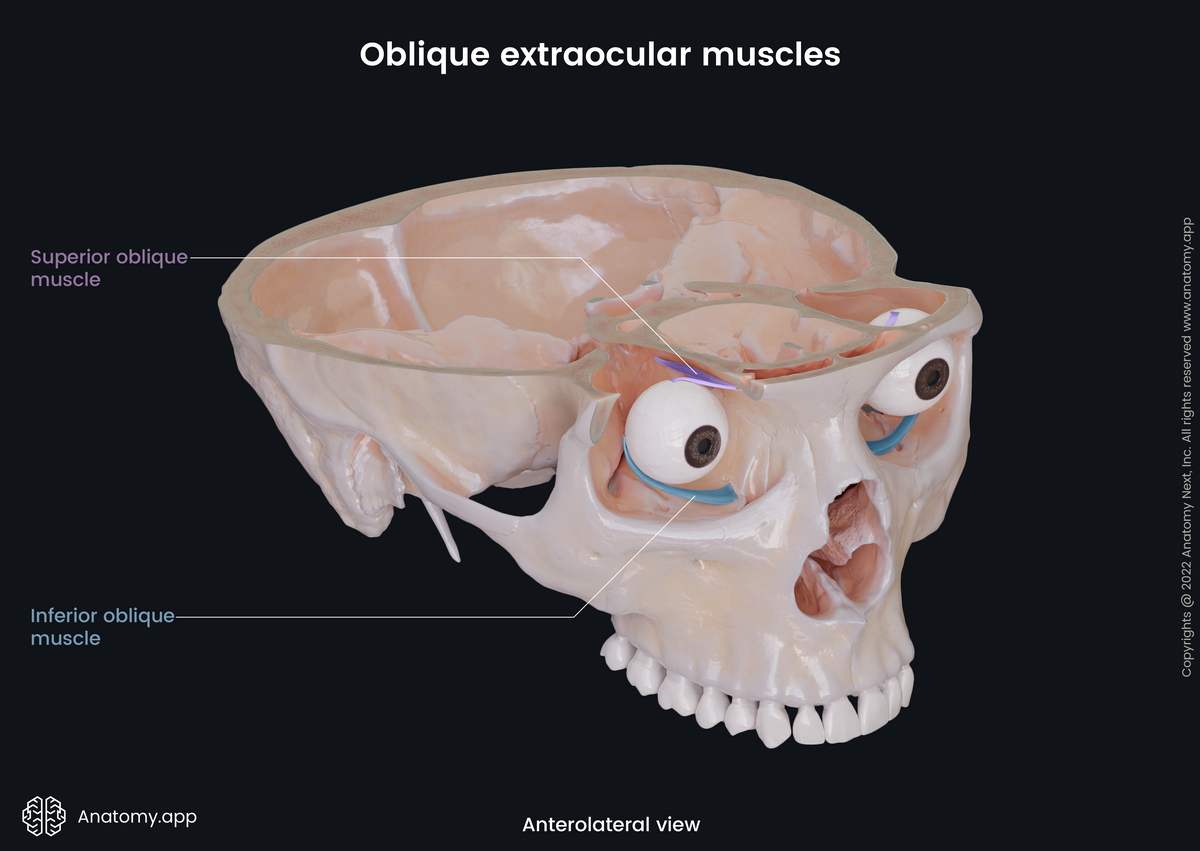- Anatomical terminology
- Skeletal system
- Joints
- Muscles
- Head muscles
- Neck muscles
- Muscles of upper limb
- Thoracic muscles
- Muscles of back
- Muscles of lower limb
- Heart
- Blood vessels
- Nervous system
- Respiratory system
- Digestive system
- Lymphatic system
- Female reproductive system
- Male reproductive system
- Endocrine glands
-
Eye
- Accessory structures of eye
- Ear
Inferior oblique
The inferior oblique (Latin: musculus obliquus inferior) also called the obliquus inferior or inferior oblique extraocular muscle, is one of the six extraocular muscles that are in control of eye movements. Activation of the inferior oblique is responsible for moving the visual gaze upward and outward.
Origin
The fibers of the inferior oblique originate from the maxilla, from the medial part of the floor of the orbit.

Insertion
The inferior oblique inserts into the posterior, inferior, and lateral surfaces of the eyeball.

Action
The actions provided by the inferior oblique include extortion (external rotation), elevation and abduction of the eye. The inferior oblique therefore turns the eye upward and outward with lateral rotation.
Innervation
The inferior oblique is innervated by a branch of oculomotor nerve (CN III).
Blood supply
The inferior oblique receives arterial blood supplied from the ophthalmic artery.